EVERYTHING FOR THE TRAIL
Hiking Gear

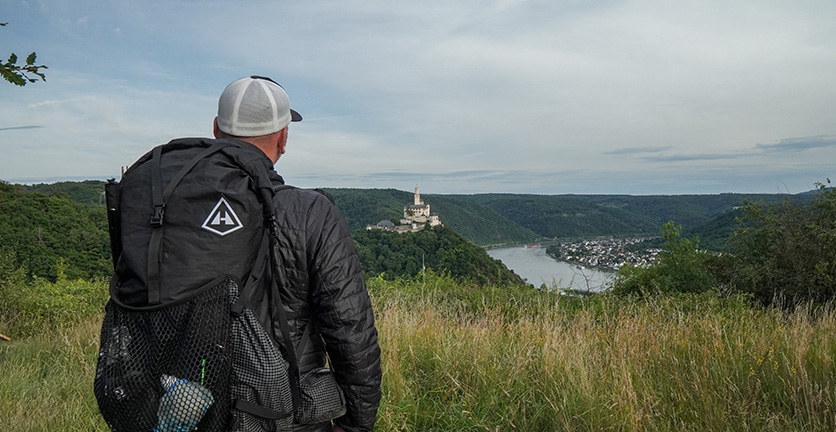
Hiking gear on the North South Trail
THESE ITEMS ARE ESSENTIAL
The North South Trail is a long-distance hiking trail that is mostly self-sufficient. This means that you carry everything you need with you for several months: Tent, sleeping system, water and food. You cannot compare a long-distance trail with a day hike.
Weight is your enemy number 1. There are certainly some hikers who manage to master such a long distance even with 66 lb, but for them the path turns from a leisure activity that should actually be fun into torture.
After a few weeks, every thru-hiker will discard a lot of ballast. These are mainly items “that I might need” and all useless luxury items.
You don’t necessarily have to come up to the weight of an ultralight hiker who, with his minimalist and expensive complete equipment, has a total weight of less than 20 lb, including food and water. However, a total weight of 26 to 29 lb is definitely achievable and definitely worth striving for.
As is often the case in life, the question is how much money you can and want to spend. Unfortunately, saving a few hundred grams of weight often means spending a few hundred dollars more. Therefore, the cheapest thing is what you leave out.
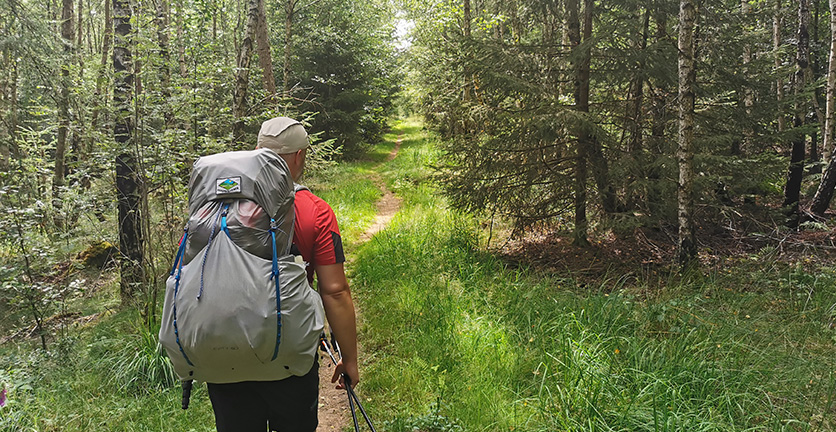
THE BIG THREE - THE MOST IMPORTANT THING FOR YOUR INDEPENDENCE AND FREEDOM OF ACTION
The ``Big Three`` are the backpack, sleeping system and tent. With these three components you can save the most weight, but also spend the most money, choose wisely and considerately.
THE TENT
It is very difficult to make a recommendation here. There are so many different systems on the market depending on price, weight, robustness and construction. In any case, you should always keep an eye on the weight, otherwise the tent alone can weigh more than 6 lb. You have to decide what you can handle, for some a simple tarp is enough, others prefer a double-walled tent with a large groundsheet and then there is ``Team Hammock``. Remember, the tent protects you from wind and weather and will be your home for the next few months. Tents made of Dyneema (Cuben Fiber) are certainly in the top class here. These tents/tarps offer enormous space at a minimum weight, but also at a very high price.
SLEEPING BAG / SLEEPING MAT
Down or synthetic fibre? Classic sleeping bag or quilt? Down is lighter, has better insulation and a smaller pack size. But make sure that the down does not come from live plucking; good manufacturers offer proof. If you generally dislike products from factory farming, you should opt for synthetic fibres. They are easier to clean, cheaper and more robust, but also heavier. No matter which version you choose, use a sleeping bag/quilt with a comfort temperature of at least 0° for the NST (note that most manufacturers give different specifications for women and men). If you tend to use a quilt, make sure you use a sleeping pad with a high R-value. This combination is statistically the most popular with thruhikers. Here you have a choice between thermal air mattresses and classic foam mattresses. These days, a modern sleeping pad weighs less than 1 lb. We recommend a mat with a high R-value. The higher the R-value, the better the insulation. A mat with an R-value of 3.5 to 4.5 (insulates to 14 F) is perfect for the NST. Foam mats are lighter, but offer significantly less sleeping comfort and usually have an unwieldy pack size.
THE BACKPACK
You can also save a lot of weight on the backpack. A 55 litre rucksack should be absolutely sufficient for the NST. A larger backpack usually tempts you to pack more useless things. With or without hip belt? Which carrying system? Waterproof or rain cover? You decide what is right for you. We recommend a pack with a maximum empty weight of 2,5 lb.
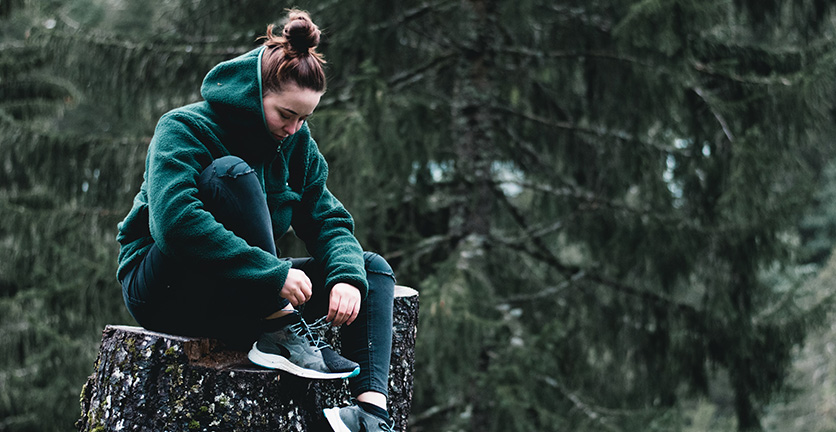
THE SHOES
HIKING BOOTS OR LIGHTWEIGHT TRAIL RUNNERS?
While there is still heated debate in Europe about whether waterproof hiking boots or lightweight running shoes are better for hiking, thruhikers in the USA have long since set the new standard. On the North American wilderness trails, almost everyone only completes their thruhike in breathable running and trail shoes.
Both have their right to exist. but you have to try out what suits you best. Once Goretex membrane or leather gets wet, it takes much longer to dry. Breathable shoes dry much faster, but they also get completely wet more quickly. Trail runners have a better foot climate, which can be helpful if you are prone to blisters. Hiking boots may offer more stable support.
A good fit and grip are crucial. The same applies to running shoes: always take one size larger. For continuous hiking, it is even advisable to buy the shoes two sizes larger. Firm and heavy hiking boots are really only suitable for very heavy backpacks or on alpine via ferratas. Since the NST is purely a long-distance hiking trail, mountain boots make little sense.
High or flat shoes? Waterproof or breathable? With or without a drop? Your decision, when it comes to footwear there is no “one size fits all” solution.
But here, too, a lower weight on the feet is crucial. Did you know that with an extra weight of 0 02 lb per shoe, your feet had to move about 2.200 lb more after a day’s march?
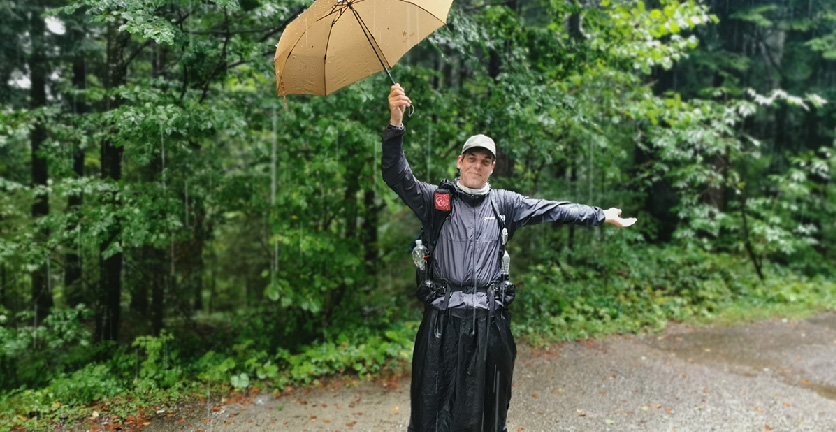
CLOTHES YOU SHOULD HAVE WITH YOU
Freezing, sweating, rain, snow, wind and sun. The ``onion principle`` makes it possible to combine different layers for a wide range of weather conditions. Depending on the weather and how you feel, you can take off or put on one layer or combine them differently.
UNDERWEAR
2 pieces are recommended, once on the body and once in the backpack. Underwear made of microfibre does not absorb moisture but wicks it away to the outside. Here, functional underwear should be chosen specifically. Since you have to wash them frequently, microfibre is a good choice.
THE WARMTH OR BASE LAYER
A pair of long johns/leggings and a long-sleeved shirt is your first layer for sleeping or for extremely cold days. Synthetic fibre is also a good choice here, as this layer also needs to be washed often.
2 PAIRS OF HIKING SOCKS
Merino or synthetic fibre? Double layer socks? Whatever you choose, always have a second pair of dry socks with you. There is nothing better after a long rainy day than slipping into dry socks. A pair of waterproof socks can also be helpful on a thruhike.
HIKING SHIRT OR T-SHIRT
1 T-shirt is enough for the NST. Yes, that's right. Get used to the fact that you will stink. The forest is not a catwalk, you will have to get used to it. It's best to choose merino wool, it's very comfortable to wear and stinks less than synthetic fibres, even after days of wear. Avoid cotton at all costs. A second clean T-shirt can be taken along for special occasions, for example for the hotel or restaurant. But for hiking, the one shirt is enough.
HIKING PANT
Short/leggings combination? Zip-off trousers? Purely a matter of taste. Zip-off trousers offer many pockets and on hot days they can be converted into shorts. Practical. When choosing trousers, always think about sunburn, thorns and ticks.
THE MIDDLE LAYER
The second layer is for warmth and insulation. Fleece pullover and a down jacket. Of course, the fleece pullover can be replaced by a light merino/ synthetic fibre shirt in high summer. But the down or synthetic fibre jacket should always be with you.
RAIN AND WIND PROTECTION (SHELL LAYER)
Rain jacket or rain poncho? Rain pants or rain skirt? We recommend a light rain jacket that can also be used as a windbreaker and a rain skirt for the NST.
HEAD COVER
Your decision and a matter of taste. A tube scarf (buff) or rather a baseball cap? Beanie or Panama straw hat? Or do you want to go typically German with a traditional hat?
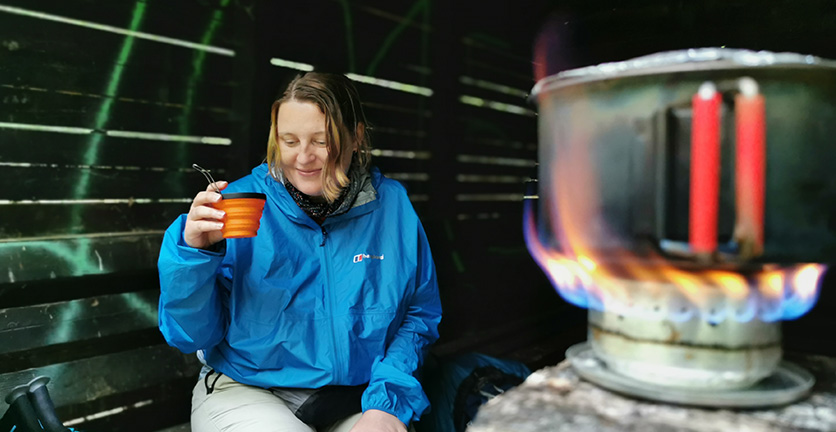
WHAT ELSE DO I NEED?
OUTDOOR KITCHEN
A hot meal on a cold day can turn a humble day into another good day. In most cases, all that is needed is a titanium pot, a lighter, a spork (spoon and fork in one), a gas or spirit cooker and, of course, fuel.
A KNIFE
Take a small, light knife that is enough to cut off a slice of cheese or sausage. In Germany you don't need a Bear Grylls survival knife or a Rambo machete.
HEADLAMP
With daylight slowly fading, you usually have a problem. Without additional lighting, hiking can sometimes even be dangerous. Setting up a tent in the dark or with only mobile phone lighting is also not an option. Light headlamps are available in different versions: Models from 50 to 1000 lumens, different light modes incl. red light, battery or rechargeable battery powered? Your choice.
WATER FILTER
If you have ever had the pleasure of parasites in your gastrointestinal tract, then you already know how important clean drinking water can be. Even in Germany, a small and light water filter should definitely be in your backpack. A recommendation for the NST: the Sawyer Squeeze or the Katadyn BeFree.
HYGIENE SET
(Bamboo) toothbrush, natural soap (hair, body, washing clothes), disinfectant, shovel, toilet paper, microfibre towel, nail scissors. Deodorant is not necessary, we hikers all stink!
FIRST AID AND REPAIR KIT
Painkillers, (blister) plasters, personal medication, tick forceps, gastrointestinal tablets. Repair patches for the air mattress, repair tape, needle and thread, safety pin, some light string.
TECHNOLOGY, A POWERBANK AND CHARGING CABLE
It is no problem to navigate with your mobile phone on the NST. The important thing is that the maps are available offline and the mobile phone is in flight mode. With this method and a decent power bank, you can be self-sufficient for a fortnight.
OUR RECOMMENDATION
RAIN UMBRELLA
One of the most important items you can have with you. An umbrella only offers advantages, try it out and you'll never want to go out without one again, I promise.
HIKING OR TREKKING POLES
There is no question that trekking poles make walking easier. If you don't already have them with you because you use them to pitch your tent or tarp, just give them a try. However, you should not walk exclusively with poles, as this reduces your own surefootedness.
If you are interested in light hiking, I recommend the video of Soultrails. He is an ultralight hiker and presents his equipment for the NST in this video. More importantly, he explains why he chose these items and which ones he deliberately leaves out. Admittedly a very long video, but it is also a long way…



